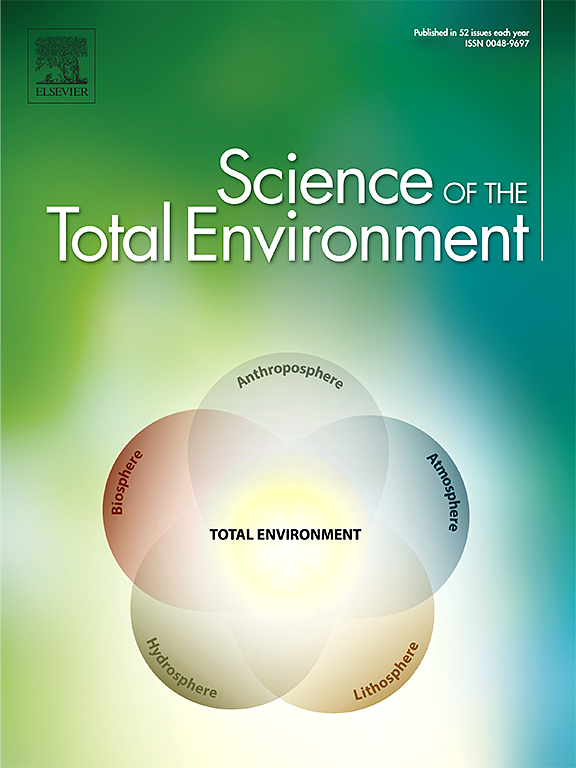The influence of atmospheric drivers, environmental factors, and urban land use on extreme hourly precipitation trends over the CONtiguous United States for 40 years at 4-km resolution (CONUS404)
IF 8.2
1区 环境科学与生态学
Q1 ENVIRONMENTAL SCIENCES
引用次数: 0
Abstract
High-resolution datasets provide unique insights into extreme precipitation dynamics, capturing atmospheric, environmental, and anthropogenic influences missed by coarser data. Here, we use the 4 km CONUS404 dataset (1980–2021) to analyze trends in extreme hourly precipitation across the contiguous USA and adjacent regions. Using the 42 highest hourly precipitation values (HP42) from the 42-year dataset, we estimate regression slopes for their annual occurrence and intensity. ANOVA analysis examines the effects of elevation and land use on HP42 trends, while Multiple Linear Regression (MLR) assesses the effects of atmospheric drivers (dew point temperature, El Niño, La Niña, and North Atlantic Oscillation). Positive frequency slopes dominate central and northeastern regions, while decreases occur in the West and Southwest. Magnitude slopes are less spatially consistent but near zero in the high-elevation, arid regions of the West. Dew point temperature (TD) drives magnitude trends, while frequency trends are influenced by TD, La Niña, and the positive North Atlantic Oscillation index. Elevation significantly shapes frequency trends, with higher trends at lower and medium elevations (200–1000 m) and weaker trends above 1500 m. Land use impacts vary with elevation; Urban areas show decreasing frequency across several elevations, while natural land uses such as forests and wetlands often exhibit an increase or stabilization in precipitation trends at various elevations. Aggregating variables to coarser resolutions improves MLR model performance, unveiling significant factors by reducing noise. Hotspot analysis reveals that larger cities (e.g., New York, Los Angeles) have concentrated precipitation hotspots, while smaller cities (e.g., Memphis and Nashville) exhibit scattered trends. The overlap between frequency and magnitude clusters highlights shared drivers, suggesting increased vulnerability in peri-urban areas. These findings underscore the need for adaptive strategies addressing the complex interplay of urbanization, elevation, and climate factors.

求助全文
约1分钟内获得全文
求助全文
来源期刊

Science of the Total Environment
环境科学-环境科学
CiteScore
17.60
自引率
10.20%
发文量
8726
审稿时长
2.4 months
期刊介绍:
The Science of the Total Environment is an international journal dedicated to scientific research on the environment and its interaction with humanity. It covers a wide range of disciplines and seeks to publish innovative, hypothesis-driven, and impactful research that explores the entire environment, including the atmosphere, lithosphere, hydrosphere, biosphere, and anthroposphere.
The journal's updated Aims & Scope emphasizes the importance of interdisciplinary environmental research with broad impact. Priority is given to studies that advance fundamental understanding and explore the interconnectedness of multiple environmental spheres. Field studies are preferred, while laboratory experiments must demonstrate significant methodological advancements or mechanistic insights with direct relevance to the environment.
 求助内容:
求助内容: 应助结果提醒方式:
应助结果提醒方式:


